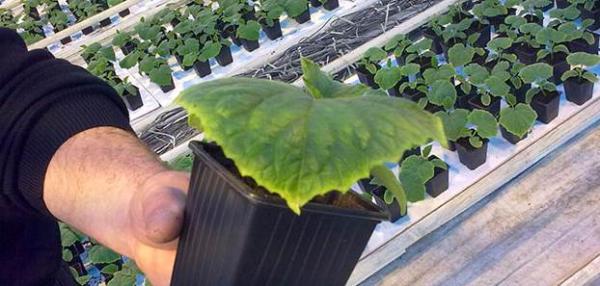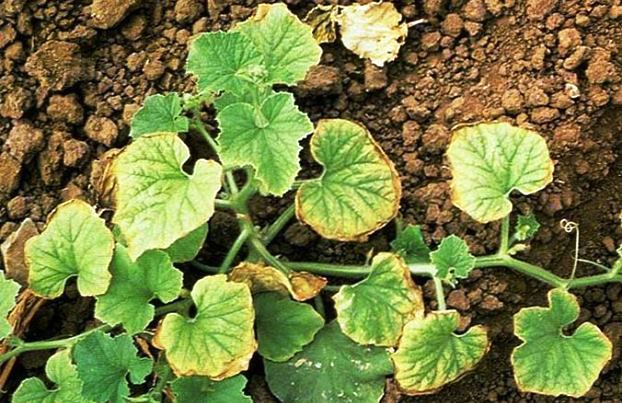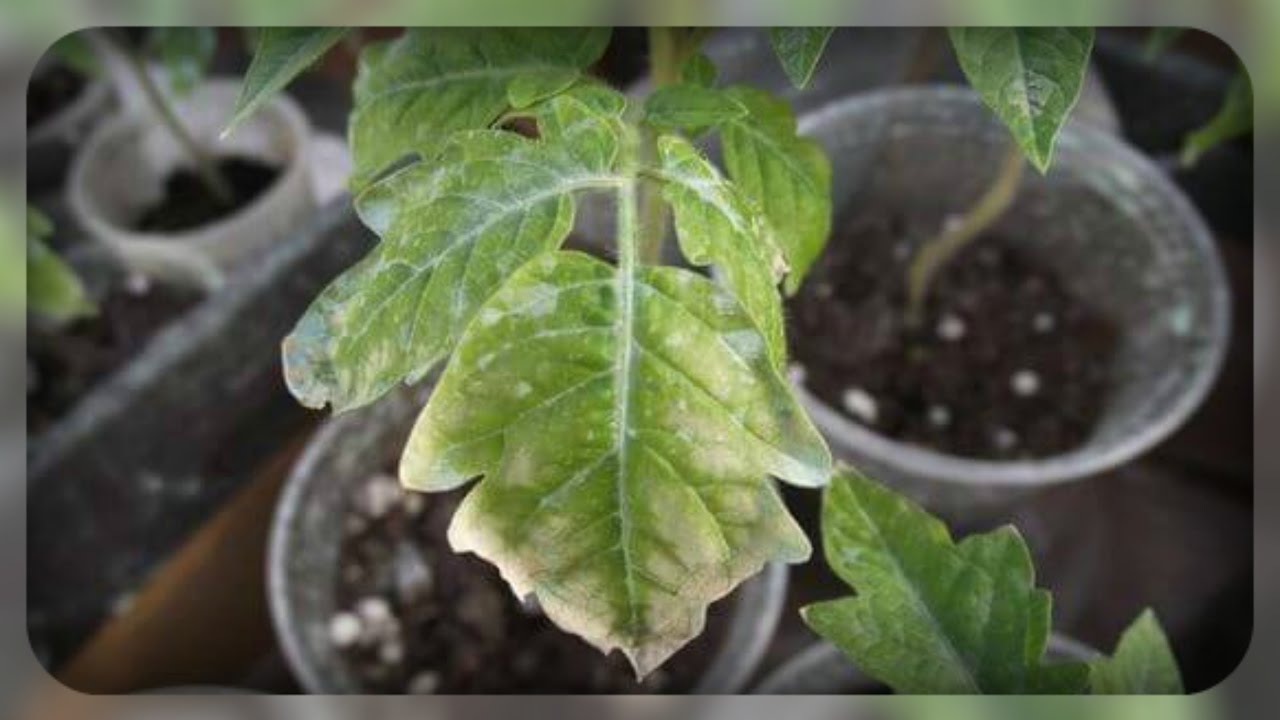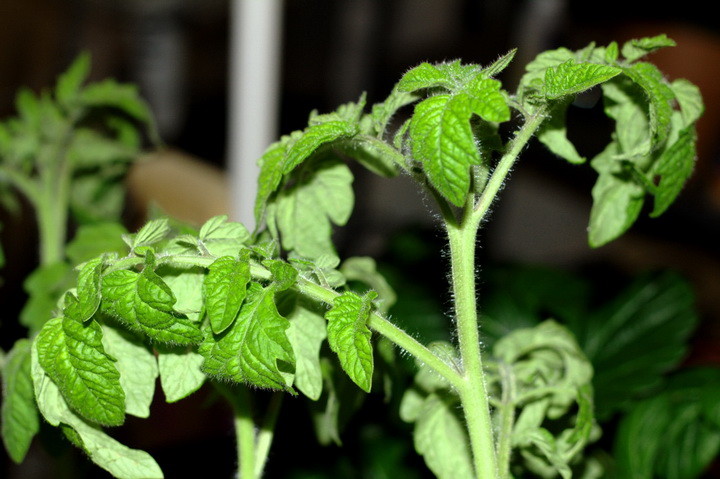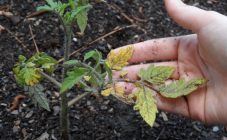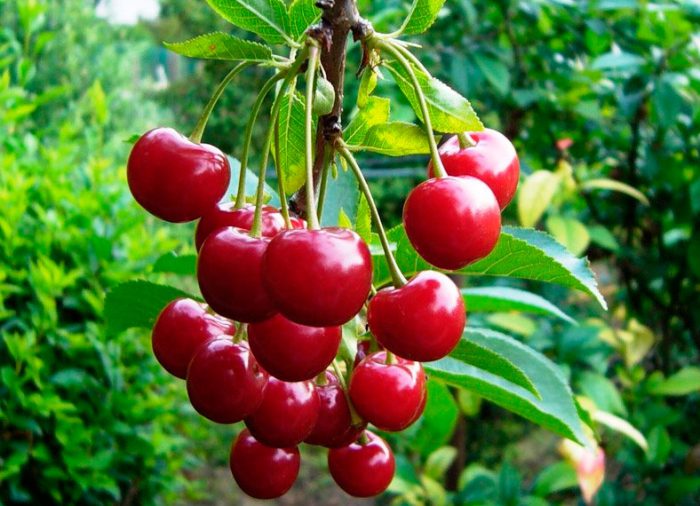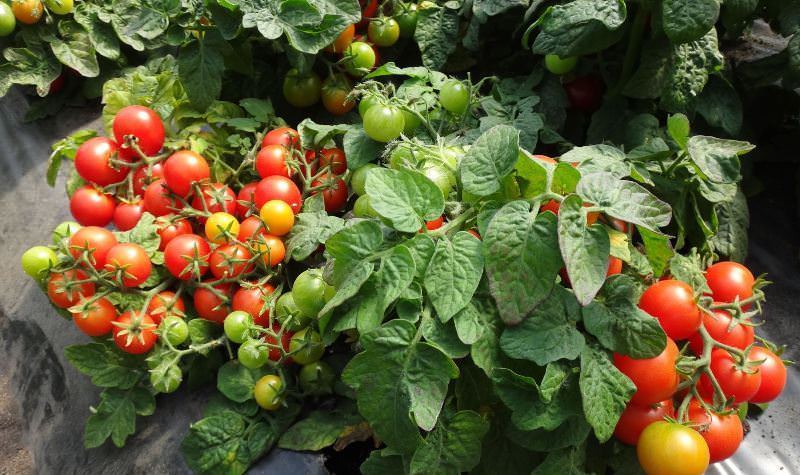Content:
Seedlings and adult plants of cucumbers delight summer residents when their leaves have a bright emerald color, which is an indicator of health. Unfortunately, the development process does not always go smoothly. For various reasons, the leaves can turn white, stained and dry. The veins on the leaves sometimes turn brown. It is difficult for gardeners without experience to figure out why the leaves of cucumbers turn white. There may be several factors leading to such consequences.
Conditions for the normal growth of seedlings
Seedlings of cucumbers can be grown at home and in greenhouse conditions, or seeds can be embedded directly into the ground. In each of these cases, you need to provide plants with their needs for growth and development.
At home
Good quality seedlings should be compact, have strong stems with short internodes, dense dark green leaves and a developed root system. To achieve this result, seedlings need proper care. It is advisable to maintain the daytime temperature on the windowsill in the range of 20-22 °, and the nighttime temperature - at least 15 ° C. Seedlings must be additionally illuminated for 8 hours daily.
Seedlings are watered daily with warm water in moderation, with a lack of moisture, the plants can dry out. The excess water from the pan must be drained. The seedlings are kept at home for about a month, during this period they are fed twice. The first feeding is carried out 2 weeks after the emergence of shoots, diluting 1 tsp in 3 liters of water. urea.
With nitrogen deficiencies, the leaves can turn white, become faded. After another 14 days, the seedlings are fed with a solution of nitrophoska (1 tsp per 3 l of water) with the addition of wood ash (1 tbsp).
In the greenhouse
Planting cucumbers with seeds in a greenhouse should take place at a soil temperature of + 12 ° C and air + 15 ° C. Suitable for planting hybrids, parthenocarpics and bee-pollinated varieties. If plant health and bountiful harvests come to the fore, it is better to give preference to hybrids.
Seeds can be buried dry or slightly hatched.
In the first stage of growing cucumbers, it is important to weed often so that the weeds do not take food. Be sure to loosen the soil, acting carefully so as not to hurt the delicate roots. Water the seedlings once a week with warm water.
The first feeding is carried out at the stage of the appearance of the first 2 leaves. Pickling is carried out even at the seedling stage - this procedure will contribute to the formation of more powerful roots. Watering is carried out 2-3 times a week, making sure that the soil always remains slightly damp. For feeding, mullein, chicken droppings, humus, compost are used, alternating with mineral fertilizers. Cucumbers are fed no more than 5 times per season.
In the ground
If the gardener does not have time to grow seedlings, cucumber seeds can be sown directly into the ground. Sowing is carried out when the soil temperature is + 14 ° C and the threat of return frost has passed, to a depth of 2-3 cm. Cucumbers are very fond of warmth, moisture and nutritious soil. If there are concerns that low temperatures may return, during the first weeks, cucumbers can be grown under a temporary shelter, which will also help maintain high humidity.
At first, the beds are regularly loosened, weeded and watered. The soil should not be allowed to dry out. To avoid excess moisture in the ground, it is better to make raised beds. Before flowering, cucumbers in the open field can be watered once a week, then watering is done every 3-4 days, and even more often in the heat.
For open ground today, many early, abundantly fruiting, disease-resistant hybrids have been bred.
The first feeding is carried out 3 weeks after planting, then the bushes are fertilized 1 time in 2 weeks. It is best to alternate mineral mixtures and organic solutions. Cucumbers are best grown by tying them to a trellis. To prevent weeds from growing, it is recommended to mulch the land on the ridge. When the roots are exposed, the plants are spud.
Causes of stains on leaves
Not everyone knows what to do, if the leaves of cucumbers turn white, spots and dots appear on them. By the nature of the damage on the leaves, you can understand what exactly the plants are suffering from. Pests, diseases and improper care can be the cause of this phenomenon. Here is a list of common cucumber diseases:
- Mealy dew... Caused by a pathogenic fungus. It manifests itself by the appearance of white spots on the back of the leaves. At the second stage, the disease also affects the stems, which become thinner. As a result, the plant dies. The disease often occurs on overgrown seedlings.
- False mealy dew... A white bloom appears on the underside of the leaves, which later takes on a purple hue. From above, the leaf plates are covered with light spots located along the veins. Then the leaves are covered with large brown spots. Twirl and fall. The disease develops rapidly at high temperature and humidity. Let the soil dry and lower the temperature by airing.
- Root and basal rot... It affects plants weakened by improper care at any stage of growth. It develops on the roots and manifests itself by the appearance of brown streaks and dots that quickly grow and merge. The leaves are covered with brown spots and deformed.
- Mosaic... Caused by the cucumber mosaic virus. It manifests itself by the appearance of a mosaic pattern on the leaves at high air temperatures. Later, the leaves begin to wrinkle, the stem cracks.
- Fusarium withering... It begins with wilting of the tops of the stems. During the period of ovary formation, the leaves begin to turn yellow, the lashes dry up, the plants stop growing and die in the absence of treatment.
- Cladosporium... A fungal disease that most often affects young fruits. It manifests itself by the appearance of dark brown spots on fruits, leaves and stems. It is more often found on greenhouse cucumbers. The result is the dying off of the vegetative mass and damage to the fruit.
- Ascochitosis... A dangerous disease that affects cucumbers at any stage of development and leads to their death. It manifests itself by the appearance of light gray, rapidly growing spots on the leaves. Then black dots appear on the foliage containing fungal spores. Most often appears on greenhouse cucumbers at the time of fruiting.
- Gray rot... Appears at high humidity and low temperatures, watering with cold water. Brown spots appear on the leaves, the stems begin to rot.The affected areas are covered with a fluffy bloom, which contains mushroom spores. With thickened plantings, it quickly moves to neighboring plants.
- White rot (sclerotinia). It begins in the root zone of the stem with the appearance of weeping spots. Over time, covered with white "cotton" bloom with mycelium. Gradually covers the upper parts of the plant, leading to its wilting and death.
- Anthracnose... Arises from excess moisture and lack of nutrition. It manifests itself by the appearance on the leaves of light brown spots with a darker border. Then the disease affects the stems and fruits. On the greens, ulcers are formed, covered with pink mucus.
As a preventive measure for all these diseases, it is necessary to carry out pre-sowing seed dressing with potassium permanganate, Alirin-B, Gamair or Fitosporin, disinfecting the soil, disinfecting the greenhouse with Pharmayod-3 (200 ml per 10 l of water). If the edges of the leaves of cucumbers dry out, what to do? Treatment of diseases will be more effective with the use of chemicals:
- What to do if white powdery mildew spots appear on the cucumbers? Spraying with drugs is used to treat the disease "Quadris", "Topas", "Jet"the entire aerial part of plants.
- Downy mildew is treated with copper-containing compounds - "Oxyhom", Ridomil Gold, Bordeaux liquid. Biological preparation is also effective "Rizoplan".
- When root rot appears, the lesion sites sprinkle powder from wood coal, chalk and ash. Treatment with copper sulfate will also help.
- When mosaic amazed parts plants as quickly as possible cut off and burn... The rest of the plants are sprayed with a solution of whey.
- Fusarium is incurable, so it is important destroy the sick plants at the first sign of illness, so that prevent infection healthy bushes.
- With cladosporia, treatment is carried out bordeaux liquid or "Oxyhom"... At the same time, you should stop watering and ventilate the greenhouse more often.
- Ascochitis is treated with treatments bordeaux liquid, in case of lesions of the stem, they are coated with a mixture of copper sulfate and chalk of diseased areas.
- From a plant affected gray rot, cut off all diseased leaves and rotten areas of the stem. With a large coverage of the disease, the bush is completely destroyed. You can apply the coating of decaying areas with gruel from crushed chalk and a solution of potassium permanganate.
- In case of severe damage to white rot, it is better to destroy diseased plants. If symptoms have just appeared, drug treatment can be applied "Rovral SP", "Euparen multi JV "(from the firm Bayer).
- If anthracnose manifests itself on the plants, the affected areas are removed, and then the bushes are sprayed with solutions "Oxychoma", "Kuproksata", "Acrobat MC", copper oxychloride.
Bushes can also be affected by pests. Most often these are aphids, spider mites, whiteflies, rootworm nematodes, thrips, sprout flies. In this case, the edges of the leaves of the cucumbers dry out. First, the tips of the leaves begin to dry out, dark dots appear on them. If pests are not dealt with, the leaves turn yellow, they can dry out completely and fall off. It is possible to process plants with a slight lesion using folk remedies, they also carry out prevention. To do this, use:
- a decoction of celandine (400 g of fresh herbs per liter of water, boil and leave for 24 hours);
- garlic infusion (200 g of chopped garlic per 1 liter of water, leave for 4 days, when using 30 g of concentrate, dilute in 10 liters of water);
- ash and soap solution (200 g of ash and 50 g of soap ha 10 l of water);
- infusion of hot pepper with tobacco (30 g of crushed pepper and 200 g of tobacco dust per 10 liters of water).
In case of severe infection, insecticides are used: "Decis", "Inta-vir", "Kinmiks", "Karbofos", "Aktara". The following drugs are effective against ticks: "Vertimek", "Antiklesh", "Fitoverm", "Fufanon", "Apollo".
Disease prevention
Pathogenic microorganisms can enter seedlings through infected seeds, soil and from nearby diseased plants. Improper agricultural technology contributes to the development of a painful condition.
The development of the disease can be caused by both increased dryness and excessive air humidity, low temperatures, too dense planting, excess nitrogen fertilizers, insufficient illumination, watering with cold water. Plants can dry out or rot at the stage of cotyledonous leaves.
As a preventive measure, it is imperative to carry out pre-sowing treatment of seeds and soil. Before planting on seedlings, it is recommended to pickle cucumber seeds in a solution of potassium permanganate or phytosporin. In order for the plants to remain strong and healthy, it is necessary to give them all the necessary fertilizing during the growth process, otherwise deformation of the leaves and changes in their color are also possible.
